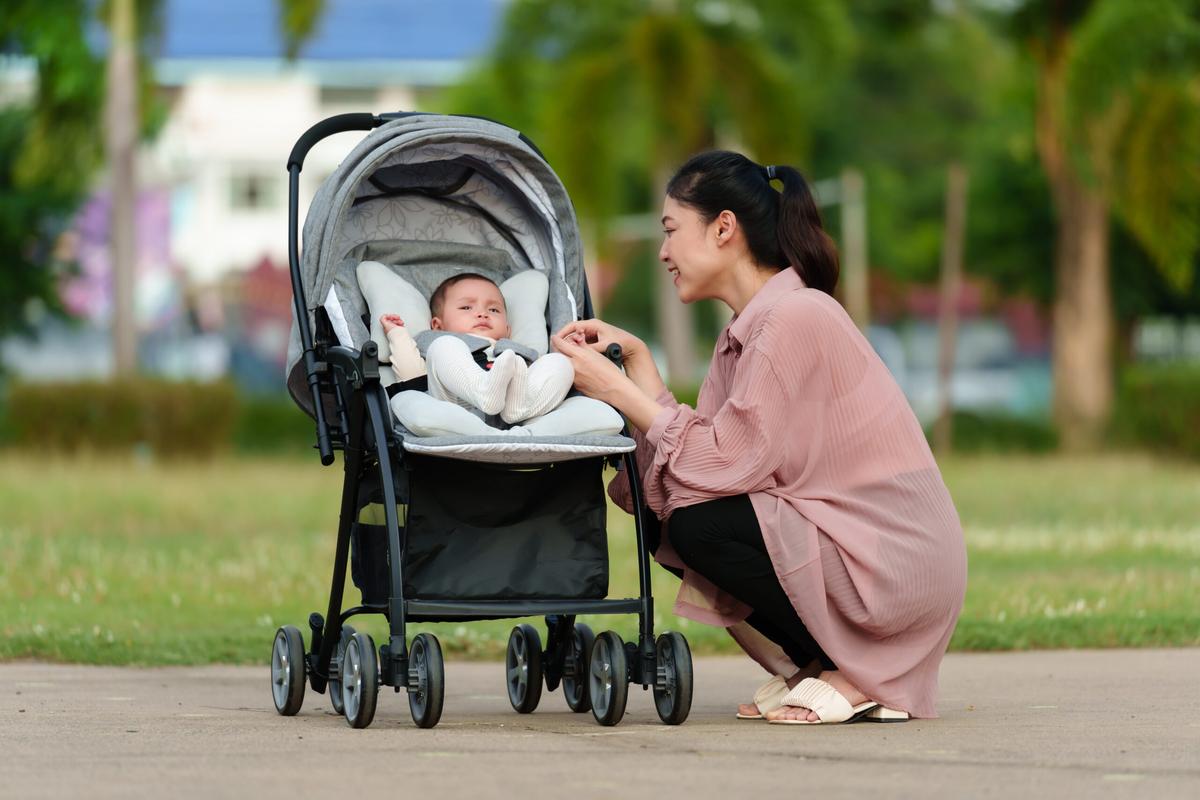What To Look For in Baby’s Stroller At Every Age
If you want to take your baby out and about, a stroller is going to make that much easier in the early years of life!

Baby strollers can help your little one get out in the world before they can walk, or when they can only walk a short distance. It also keeps them safely in your sights, and as they become more independent, it can become a good place to take a break or get some shade. There are so many uses for their stroller!
As baby’s needs change at every age, so does the type of stroller that may be best for them. Learn more about the best type of stroller for baby at every age.
Before baby is able to sit up on their own (at about 0-6 months), baby will need to use a stroller to move around outside of their home. Some of the features to look for include:
A seat that fully reclines, so your newborn can lie flat on their back.
A travel system or a stroller with a bassinet attachment. A travel system is a stroller that can hold baby’s car seat. This is a great option if you have a car, and if you want to be able to move baby from the car to their stroller easily.
Baby should be reclined, so it is not recommended to use a jogging stroller at this age.
When baby is able to sit upright, but isn’t walking yet (at about 6-12 months), the stroller seat should allow baby to sit upright. Look for some of these features:
The stroller should be roomy, with plenty of support and cushioning.
It may be helpful for baby to have multiple recline positions in their stroller. While they can sit up at this age, their core strength is still developing, so it’s best if they have options for reclining.
Secure baby with a five-point harness. A five-point harness has shoulder straps, a strap between the legs and straps around the waist.
Once baby is walking, your child will be hopping in and out of the stroller. Consider these features at this age:
Having a five-point harness still important! Even though it may be a little more work to secure baby in this harness as they get in and out of baby strollers, this is the best way to keep baby safe when in the stroller.
Look for “pinch points”. Pinch points are parts of the chair where a child’s fingers can get pinched. While a foldable stroller may have some pinch points when the stroller is being folded, there should not be any pinch points when the stroller is in use.
You may carry it around, so look for something foldable. When you fold the stroller, always fold or unfold away from your child to avoid getting fingers caught.
There is no age when children have to stop using a stroller. For many children, a stroller isn’t necessary past the age of 3. Consider your child’s comfort and needs when making this decision to determine when your little one is done with a stroller!
Why is it important to limit the use of baby strollers?
Every parent uses a baby container at some point. Car seats, bouncer seats, swings, and strollers are all considered containers. They’re convenient when you need to cook dinner, hop in the car, or even take a shower! But when there are opportunities for baby to leave a carrier, take it!
Devices that contain baby (like a stroller) can restrict baby and place pressure on their head. The walls of these containers are designed to surround and cradle baby for safety. This can restrict baby’s movement and limit their ability to explore their surroundings. Additionally, these containers tend to stabilize baby’s head at midline, which is ideal for safety in the car. For example, but places increased pressure on the back of the skull. Many babies spend too much time in containers, and not enough time on the floor. This can lead to conditions such as Positional Torticollis and Positional Plagiocephaly.





